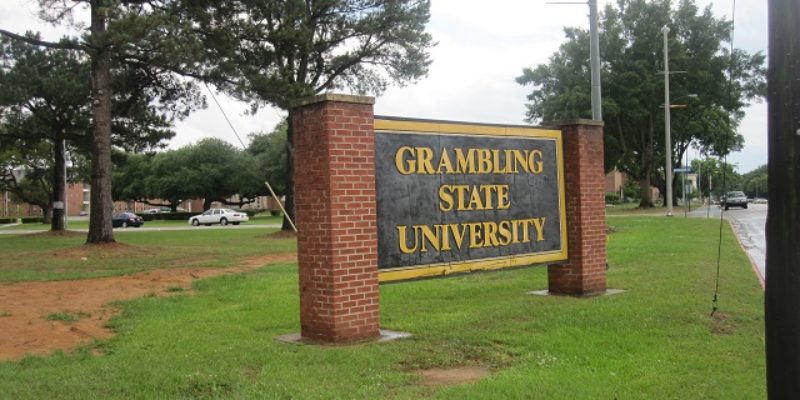Anybody want to see the six-year graduation rates for Louisiana’s public four-year colleges by race?
Here’s a chart including the white, black and overall six-year grad rates of the most current cohort…
Tossing aside LSU-Alexandria, which has been a four-year college for only a decade and clearly needs to be busted back down to community college status, there’s something noticeable about those numbers.
Namely, that in most cases the black students at the “white” schools graduate at a higher frequency than they do at the “black” schools.
Southern’s six-year graduation rate for black students is 32.3 percent, and Grambling’s is 32.0 percent. Black students graduate at those two schools at half the rate they do at LSU.
And nobody graduates from SUNO. By the way, that 21.4 percent number for “white” students doesn’t actually reflect “white” students; it’s the rate for the 14 students in the cohort who wouldn’t identify as black. The guess is none of them are white in any sense most folks would recognize, unless a kid from India or Guatemala or some such place would be considered white. So you can throw out SUNO for the purposes of this discussion.
Tossing LSU-A and SUNO, and comparing Southern and Grambling to the other 10 public universities in the state in six-year black graduation rates, you’ll see that six of them graduate black students at a higher rate than the two main universities focused on educating black kids do.
We can, and should, infer from this that the best and brightest among Louisiana’s black high school students don’t have much interest in “black” colleges. And they’re hardly fighting the changing of the marketplace by working to attract white students to campus – the cohort measured for six-year grad rates shows Southern with all of eight white students and Grambling with only seven.
It’s a pretty good guess that the majority of those students are athletes, and predominantly baseball players at that. In other words, there are scarcely any white undergrads on either campus.
That’s not going to cut it in the 21st century. You can’t present yourself as viable or necessary in a post-segregationist age when you (1) can’t claim to do a better job educating your target market than the majority of the colleges in the state which do not specialize in that market, largely because the better students in that market reject your premise, and (2) there is no evidence of any kind that you’re interested in changing with the times to reflect the new, diverse reality on college campuses.
The numbers show that those schools are dinosaurs.
And you can’t say that state budget cuts are the cause. They are not.
Southern’s funding for the 2014-15 budget year is $66 million. Of that number, just under $45 million comes from self-generated funds and a bit over $21 million comes from the general fund. And while it’s true that in 2008-09, when the state was still flush with Katrina cash and had a $30 billion budget to spend, Southern had $35 million coming in from the general fund, that isn’t all of the problem. Because that year Southern generated $53 million in self-generated funds. In other words, they’re bringing in less money now than they were six years ago based on things they could control.
As for Grambling, the total budget this year is $49 million, with $14 million coming from the general fund and $35 million of it self-generated. In 2008-09, the numbers were $31 million and $26 million. That’s correct – that year Grambling was getting more of its funding through the general fund than it was self-generating. To Grambling’s credit, while the “political money” has been cut they’ve actually begun generating more of their own revenue. Unfortunately, it doesn’t seem to be enough, and Grambling’s enrollment is falling off significantly. But the trend signifies that Grambling might well be a good candidate to undertake Kevin Boyd’s suggestion about setting Grambling loose in the marketplace; if its general fund subsidies are only $13 million, a 10-year bond could certainly be floated for $130 million secured by Grambling’s physical facilities (which are certainly worth $130 million or more) to replace the general fund allocation and set the university free to chart its own course.
But if you’ll compare the two schools with LSU what you’ll see is something interesting. LSU’s total budget for 2014-15 is $455 million, of which $108 million comes from the general fund and $347 million is self-generated. In 2008-09, LSU’s general fund allocation was $235 million and it self-generated $190 million, for a total of $425 million.
Meaning that LSU is taking over its own funding rather than depending on “political money,” and LSU has actually increased its funding by $30 MILLION over the past six years. This while all you’ve heard is how horrible things are at LSU. The untold story is that there is money to be had if you can attract students rather than begging at the legislature.
But you’ve got to put out a good product to do so.
And despite all of the screaming LSU President F. King Alexander has on offer to the public of late, LSU is putting out a good product and selling it to the marketplace. Grambling and Southern need to commit to doing the same, and they need to recognize the marketplace for what it is.
The marketplace. Not the state legislature. The legislature doesn’t have any money.
Advertisement
Advertisement


